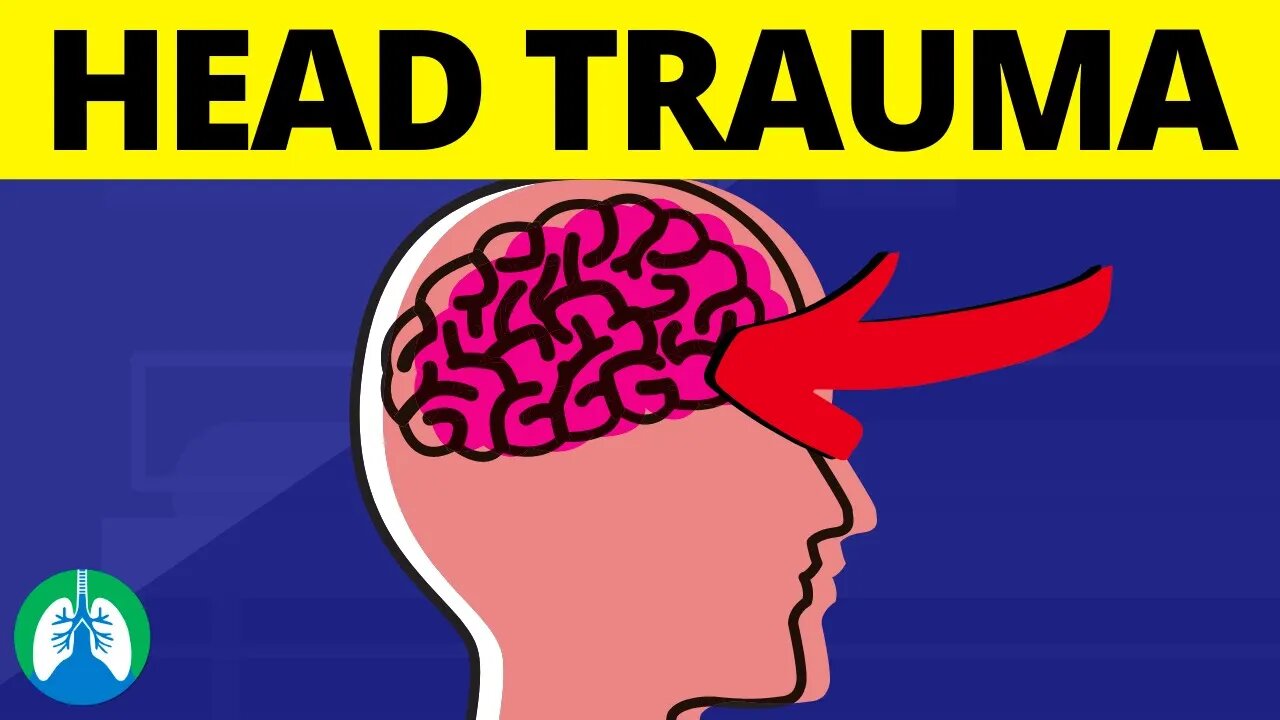Premium Only Content

Head Trauma 🧠 (Quick Medical Overview) | Traumatic Brain Injury
What is Head Trauma? What is a Traumatic Brain Injury? Watch this video to learn the medical definition of this topic!
💥Head Trauma [Full Guide] ➜ ➜ ➜ https://bit.ly/2MF62VJ
➡️ What is a Traumatic Brain Injury?
It's a general term that refers to an injury or trauma to the head that causes a disruption in normal brain function. Symptoms can be mild, moderate, or severe. For example, a concussion is usually considered to be a mild Traumatic Brain Injury.
➡️ Causes of a Traumatic Brain Injury:
▪ Motor vehicle accidents
▪ Falls
▪ Sports injuries
▪ Blunt force trauma
▪ Child abuse
▪ Blast injuries from explosions
▪ Being hit by a bullet or shrapnel
Keep in mind that there are many other causes of a Traumatic Brain Injury. These are just a few of the most common examples.
➡️ Signs and Symptoms of a Traumatic Brain Injury:
▪ Headache, lightheadedness, or dizziness
▪ Blurred vision
▪ Ringing ears
▪ Increased confusion, restlessness, or agitation
▪ Fatigue
▪ Loss of coordination
▪ Irregular breathing
▪ Irregular sleep patterns
▪ Lack of memory and concentration
▪ Vomiting or nausea
▪ Convulsions or seizures
▪ Difficulty waking up from sleep
▪ Slurred speech
▪ Abnormal pupillary response
▪ An altered level of consciousness
Again, a patient may experience other signs and symptoms with a Traumatic Brain Injury. These are just a few of the most common examples that you may see. And the severity of each symptom may vary from patient to patient. It really just depends on the severity of the injury that has occurred.
➡️ Head Trauma Considerations for Respiratory Therapists:
As a Respiratory Therapist, it’s important to monitor the patient's Intracranial Pressure (ICP) levels. This is especially true if the patient is receiving support via mechanical ventilation. You may be required to use minimal levels of PEEP in order to avoid an increased ICP. If head trauma has occurred, you may notice irregular breathing patterns. Particularly, the patient may show signs of Cheyne-stokes breathing which is an abnormal breathing pattern with periods of progressively deeper breaths alternating with periods of shallow breathing and apnea.
💥Head Trauma [Full Guide] ➜ ➜ ➜ https://bit.ly/2MF62VJ
—————
📗 BEST STUDY GUIDES FOR YOU
▪ TMC Test Bank 👉 http://bit.ly/2IGeqSu
▪ Hacking the TMC Exam 👉 http://bit.ly/2XBc8do
▪ TMC Exam Bundle (Save $) 👉 https://bit.ly/34pqEsV
▪ Daily TMC Practice Questions 👉 http://bit.ly/2NnXh3C
💙MORE FROM RTZ
▪ Free TMC Practice Exam 👉 http://bit.ly/2XlwASL
▪ Free RRT Cheat Sheet 👉 http://bit.ly/2IbmOKB
▪ Resources for RT's 👉 http://bit.ly/2WVV5qo
▪ Testimonials 👉 http://bit.ly/2x7b5Gl
🌐FOLLOW US
▪ Instagram 👉 http://bit.ly/2FhF0jV
▪ Twitter 👉 http://bit.ly/2ZsS6T1
▪ Facebook 👉 http://bit.ly/2MSEejt
▪ Pinterest 👉 http://bit.ly/2ZwVLPw
🚑MEDICAL DISCLAIMER
Medicine and Respiratory Therapy are continuously changing practices. The information in this video is for educational and entertainment purposes only. For medical advice, please consult with a physician or qualified medical professional.
💡AFFILIATE DISCLAIMER
This description contains affiliate links. If you decide to purchase a product through one of them, we receive a small commission at no cost to you.
—————
⏰TIMESTAMPS
0:00 - Intro
0:09 - What is a Traumatic Brain Injury?
0:25 - Causes of a Traumatic Brain Injury
0:48 - Signs and Symptoms of a Traumatic Brain Injury
2:08 - Head Trauma Considerations for Respiratory Therapists
—————
🖼CREDIT FOR MUSIC AND GRAPHICS:
▪ Music provided by https://audiojungle.net/
▪ Graphics: www.canva.com
▪ Graphics: www.freevector.com
▪ Graphics: www.vecteezy.com
▪ Graphics: www.pngtree.com
#HeadTrauma #RespiratoryTherapist #TraumaticBrainInjury
-
 3:33
3:33
Respiratory Therapy Zone
1 year agoSternum (Medical Definition) | Quick Explainer Video
338 -
 2:52:01
2:52:01
Jewels Jones Live ®
2 days agoTRUMP SECURES BORDER | A Political Rendezvous - Ep. 113
55.1K26 -
 25:02
25:02
marcushouse
23 hours ago $38.44 earnedStarship Just Exploded 💥 What Went Wrong This Time?!
129K63 -
 12:00
12:00
Silver Dragons
1 day agoBullion Dealer Reveals Best Silver to Buy With $1,000
78K9 -
 12:58
12:58
NinjaGamblers
13 hours ago $13.71 earnedIs This The BEST Way to Win At Roulette? 😲
122K13 -
 1:01:54
1:01:54
CharLee Simons Presents Do Not Talk
2 days agoCALIFORNIA'S DONE!
81.6K37 -
 7:33
7:33
MudandMunitions
1 day agoUnboxing My FIRST Revolver! Smith & Wesson 442 .38 Special and What’s Coming Next for the Channel
112K16 -
 1:01:05
1:01:05
Trumpet Daily
1 day ago $11.79 earnedGermany Started Two World Wars and Now Wants Nuclear Weapons - Trumpet Daily | Mar. 7, 2025
89.9K90 -
 57:07
57:07
Stephen Gardner
1 day ago🚨BREAKING: Musk STUNS even Trump with LATEST FRAUD DISCOVERY!!
215K517 -
 2:26:47
2:26:47
FreshandFit
23 hours agoRatchet Chick Gets Kicked Out "Gracefully" For THIS...
207K207